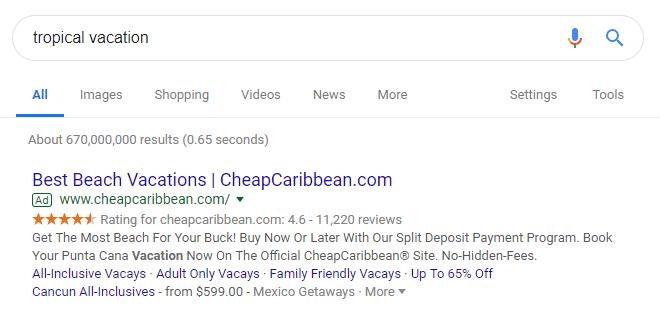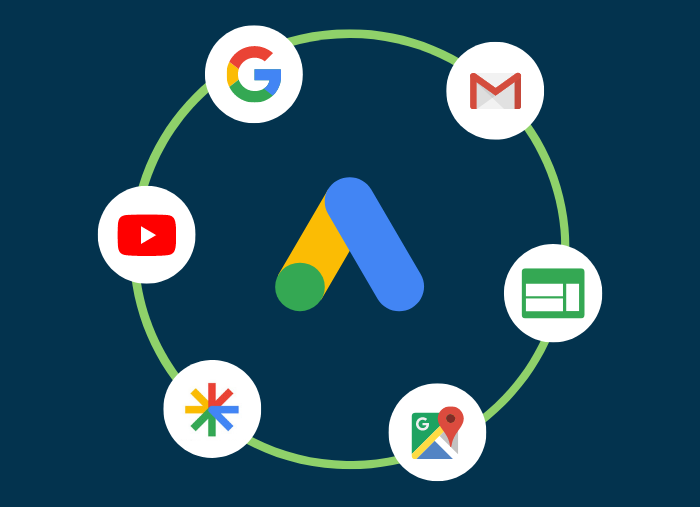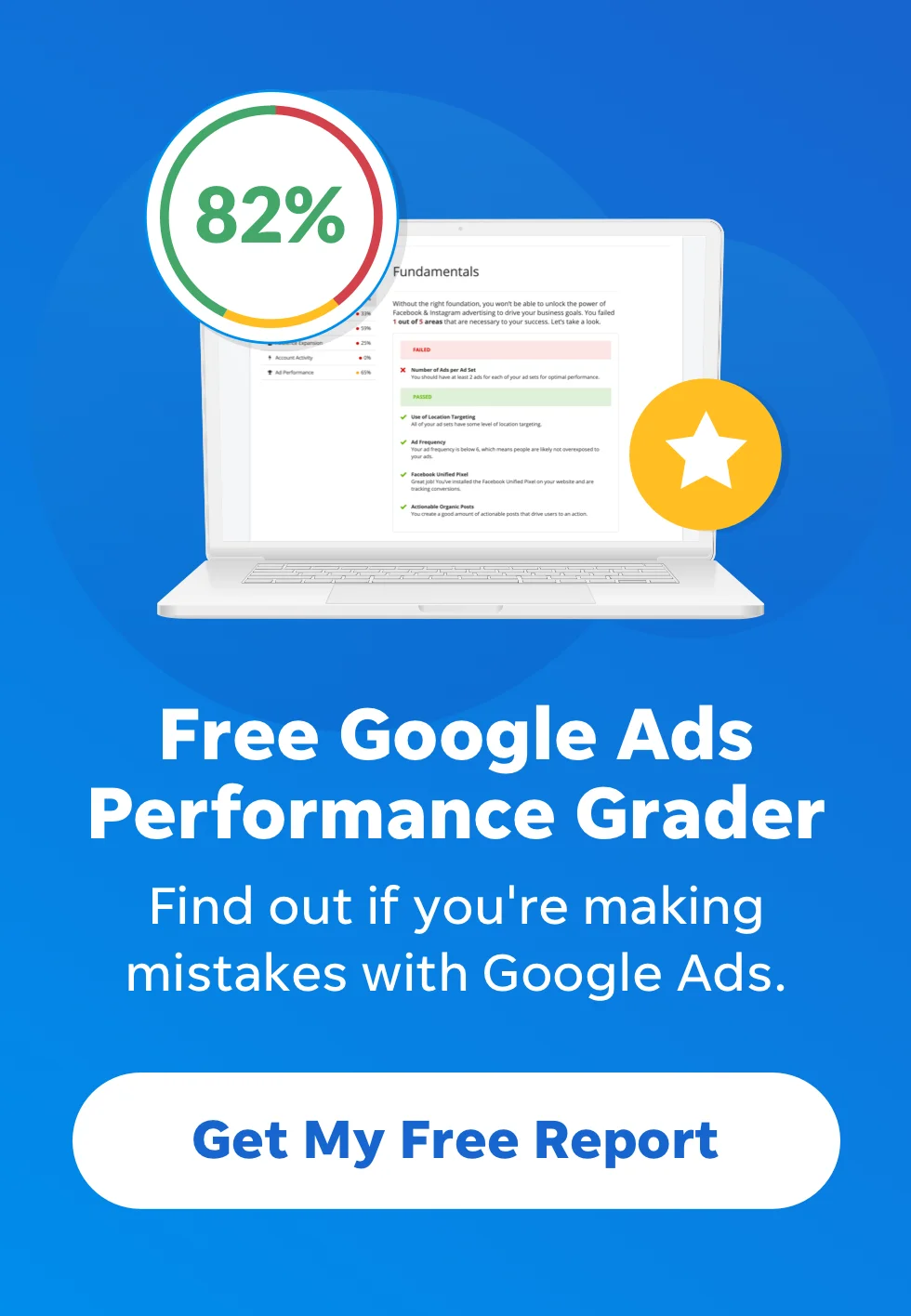
How to Build a Cross-Channel Lead Generation Strategy in 4 Steps
Cross-channel marketing is an important element of your lead generation strategy, but figuring out the details isn’t easy. It’s tricky to determine how to approach the relationship between each channel, especially if you’re considering all the relevant questions, such as:
- How much budget do I allocate to each channel?
- How do I get the most out of each channel?
- How can I better connect what we’re doing on Google to what we’re doing on Facebook?
If you’ve found yourself asking these questions, you’re not alone.
Once you begin marketing on multiple platforms, it becomes apparent that certain strategies work for more than one channel while others may only apply to one of them. In this guide, I’ll walk you through four steps to create a strong cross-channel strategy so that you can get more out of each of your advertising channels.
1. Set baseline costs to inform your full-funnel strategy
If you have advertised on Google, Facebook, and Bing for a while, then you may have a good idea of how those channels perform for the promotions you are advertising on them. When thinking about your paid strategy as a whole, it’s important to consider the baseline results that you can expect from each platform. This can get complex when you have multiple promotions and various stages of a marketing funnel to consider. However, you should be able to get started in mapping out what a typical cost per conversion is for each channel by reviewing your account analytics and, if needed, averaging out your results.
Once you have this baseline, you’ll want to understand how this standard cost translates to the rest of your funnel. This is critical because your baseline costs will help you determine the types of promotions that you use for each channel. For example, you may find that the cost for a particular conversion on Facebook is much higher than it is on Google.
For many low-funnel offerings, you will find that the additional intent behind specific search queries will yield higher quality leads for a lower cost. Many times, advertisers will find this pattern and try to expand their paid search efforts beyond the very specific high-converting keywords in an attempt to scale the channel. At that point, it may make more sense to allocate that additional budget to an equal or perhaps higher-funnel offer within Facebook instead. The higher funnel offer will generate a greater volume of leads for a lower cost while search does the heavy lifting at the bottom of the funnel. Another factor to take into consideration is the potential for a lift in search volume for related terms once you begin advertising on Facebook. In this scenario, the channels are working together to both enhance your brand and your bottom line.
Alternatively, if you discover that your baseline costs in paid search are too high for a particular promotion or keyword, but those costs are lower in Facebook, then you could allocate more of your efforts to paid social while leaving branded terms running in search to collect the additional attention the social ads are attracting.
You can set up a form like this with Facebook lead ads.
To clarify, when I mention high-funnel or low-funnel promotions, this is what I’m talking about:
- High-funnel promotions: These can be anything from a blog post, general branded ad, content download, or newsletter. This could also include simply driving traffic to your website. The idea here is to get folks into your marketing funnel with the least amount of friction possible. Theoretically you would take these leads and nurture them to a point where they would commit a lower-funnel action or become a customer. The strategy is to play the long game and generate enough volume that you can have a steady stream of leads moving towards being customers. Typically, these costs are far less than a low-funnel conversion cost and, over time, may yield a better return on investment given how well you nurture them.
- Low-funnel promotions: Low-funnel promotions have a higher value action, such as a free trial, a sales call, a demo, or a scheduled consultation. These promotions are a lot closer to generating customers than the other parts of the funnel. In theory, you would be willing to allow a much higher cost per conversion for these than you would the high-funnel promotions.
When it comes to determining which part of your funnel your offers should be categorized into, you’ll want to determine the level of intent that each provides in relation to you generating revenue from the user. Someone who views an ad that redirects to a blog post or one where they sign up for a newsletter may not have the intent to buy anytime soon. Alternatively, someone searching to solve a specific problem (that your particular product or service was created for) will have a much greater level of intent behind their click and form submission. It’s important to identify the level of intent for each promotion that you’re placing marketing budget behind because it’s going to ultimately influence your return on ad spend in the long run.
2. Track and report your results
The most critical part in all of this comes down to how you are tracking results from each channel. Having proper Google analytics tracking is ideal, but it isn’t 100% necessary in every scenario. The most important level of tracking is from the paid ad landing page to whatever marketing automation or system you are using to collect these leads. As long as you can measure the landing page performance for each channel specifically, then you are in a good spot going forward.
Google analytics is helpful in that you can set up goals and UTM tracking that is specific to your channel and marketing goals. To do this you want to take the landing page that you are going to use for each promotion and make UTMs to attach to the end of the URL. In this previous post, I outlined how to get started with Google analytics as well as all of the necessary steps in order to properly set up channel specific tracking and goal completes.
Along with proper tracking comes proper reporting. You’ll want to correlate the periods of paid advertising to your sales cycle (something I’ll discuss further on in the post). Whether you advertise on a monthly, quarterly, or a more sporadic basis, you’ll want to be able to compile the data in a comprehensive format to truly analyze how each channel performed. Some of the key areas to look at when comparing promotions within channels would be:
- Conversion rates at the channel level: Understanding how the ads you are converting against a particular audience or ad group is critical. Establishing baselines over time will allow you to dig into your campaigns and determine whether a low conversion rate is an issue with a particular ad/promotion or the targeting is.
- Landing page conversion rates from each channel: As mentioned above, it is important to use identical but separate landing pages for the same promotions across all channels.
- Cost per conversion: This may seem obvious, but keeping records of this over time will allow you to calculate new customer acquisition costs from all lead gen efforts.
- Lead Quality: This one relies on your internal system for approaching and vetting leads. It can vary greatly from promotion to promotion but I mention it as it is vital in determining where to better spend your dollars. Filtering out junk leads gives you a true acquisition cost that may be surprisingly higher than you may have expected. I’ve seen this happen several times with campaigns across the Google Display Network where the CPA at the Google level was great, but the leads that were coming through were not.
3. Allocate your budget based on intent
In a perfect world, you would have unlimited monthly budget to spend and test a variety of different strategies. But, here in the real world, we know that almost never happens, and it’s more likely that you may be strapped for marketing cash when attempting to get started. In this case, testing a variety of promotions at once to gain insight into how it affects your business may not necessarily be an option. With a limited budget, you will have to prioritize what you try out in terms of promotions.
Push vs. Pull
It’s important to understand the nature of each channel when deciding where your dollars may be spent when you are limited by how much you can experiment with. Paid search and paid social are very different marketing options to begin with, and there are a multitude of complex features in each that make the decision making for each platform difficult. One way to circumvent the information overload is to think of the general strategy behind each platform individually. I use the example of “push vs pull” to simplify this process.
Paid Social: Channels like Facebook, Instagram, Snapchat, Twitter, and LinkedIn are what I would consider “push” marketing. Unless you are simply using them for remarketing purposes, you will be targeting audiences who may or may not have heard of your business. You are essentially “pushing” the promotion out to them. This relates to intent, as it may not necessarily be there. Your job as a marketer is to encourage an action and narrow the audiences down to individuals who are most likely to complete it.
If you’re limited budget-wise, my suggestion is to begin with remarketing. Targeting to users who have already visited your website or landing pages already have a degree of interest and possible intent. They would be the “low-hanging fruit” for you to get started with. Depending upon your site volume, you should have the ability to spend a relatively low amount on this audience (the smaller the audience, the less you would have to spend to reach most of them).
Paid Search: These channels (Google and Bing) are what I would categorize as “pull” marketing. When a user is searching for specific keywords related to a product or service (or a problem that either a product or service can solve) there is inherently a degree of intent. With search, you are in essence “pulling” the leads in by capitalizing on this intent. Many times, depending on your industry, high-intent keywords and search queries have more competition and higher costs associated with them.
If you are limited by budget, it would make the most sense to narrow your campaigns down to the most relevant and important keywords related to your business offering. Even then, it may be a better idea to keep your branded campaigns active and allow paid social activities the chance to drive branded searches where you can get leads for a lower price.
Google Display Network: The tricky thing with Google is that they provide advertisers with so many options to market their products and services. I would categorize ads on the Google Display Network as “push” marketing, even though Google offers the ability to target in-market and custom intent audiences. The logic here being that the user isn’t directly looking for something in real-time and, therefore, your ad acts more as a digital billboard.
When you’re allocating your budget, consider your advertising goals and divvy up the funds between these types of channels accordingly.
4. Define your sales cycle from conversion to customer
The most important metric and one of the most difficult to measure (especially if you are a smaller operation) is the conversion to sale cycle. Some companies have a sales cycle that can stretch beyond 30 days, which would require you to advertise for an extended period of time to understand how well the leads from each channel convert to customers. This also goes back to the previous points made about tracking: You’ll want to have an internal infrastructure that allows you to track leads from conversion all the way throughout the marketing funnel to sales.
Having access to this data over time will make your life a lot easier. You can ascertain which channel has the best conversion to customer and how long it takes each channel to have a lead become a customer. This can all be applied to the baselines you establish for paid promotions. For example: If you know that two months down the line Facebook leads will convert to customer at 20%, while Google leads with convert at 40% but you drive substantially more volume through Facebook for a much lower cost, then it makes more sense to weigh your budget allocation there.
This will be different for every business, but your sales cycle is something to keep in mind, especially when you want to know where it makes the most sense to scale.
Let your channels supplement each other
As I have mentioned, there are a lot of complex interactions between marketing channels. Once you get started running ads across a variety of platforms, the likelihood that they will influence and supplement each other will increase. Here’s a quick review of the steps you can take to create your own strong, effective cross-channel lead gen strategy:
- Establish baseline costs.
- Ensure that every action can be tracked properly.
- Allocate your budget based on your marketing goals.
- Keep in mind how paid ads affect sales (and how long it takes).
Building an effective cross-channel strategy relies heavily on the foundation of your marketing operations. There are tips and tricks to maneuver the channels themselves in order to create optimal accounts.
Meet The Author
Brett McHale
Brett McHale is the founder of Empiric Marketing, a digital marketing agency dedicated to scaling startups through paid search and social.
See other posts by Brett McHale
More Articles Like This
Comments
Please read our Comment Policy before commenting.










